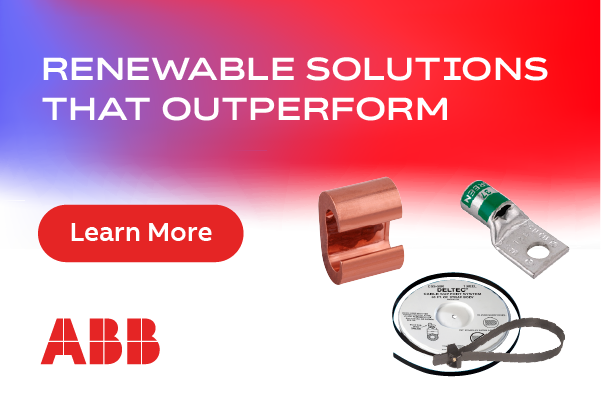Smart Inverters
Solar power is becoming an increasingly dominant player in electricity production. The distributed nature of this production requires the need to have greater control of and communication with individual solar generation sites. Because inverters are the brain of solar energy systems, there is a growing demand for inverters to become smarter. This need is being driven by the utility's need to better control and manage voltage fluctuations that can result from this type of distributed topology. This has brought the advent of smart inverters which provide new complex functionalities.
The move towards smart inverters is part of the growing trend for inverters to have increased functionalities. For instance, inverters used to only be responsible for MPPT and DC/AC conversion, whereas advanced inverter solutions are responsible for a variety of roles including communications, remote monitoring and troubleshooting, smart energy management, grid interaction, grid support, safety, and more. With solar energy systems considered an investment, smart inverters are increasingly designed to provide revenue grade data for system owners, utility, and other stakeholders. In addition to embedding these types of capabilities, many inverters tend to offer expanded API functionalities.
Smart inverters take this a step further.
Unlike standard inverters which function in a more isolated environment of the specific PV system they are managing, smart inverters need to interact with the network in a much more dynamic and interconnected manner. These new smart inverters now have flexible, adaptive, and fast bidirectional communications, a digital architecture with more processing power, and robust software infrastructure to manage energy with minimal delays. Some of the functions currently offered include the ability to remotely connect and disconnect from the grid, set the level of reactive power generation or consumption, provide voltage regulation by modulating reactive power output, provide voltage regulation by modulating real power output, etc.
Smart inverters offer value and even new revenue streams to the many solar energy stakeholders. System owners can benefit from increased energy independence and improved RoI. In addition, as the inverter continues to expand its role of energy management into smart homes, it should also be able to provide superior convenience, such as remotely managing appliances. Utilities can benefit from increased grid stabilization, and achieve additional value streams through voltage regulation, frequency control, and power supply/reservoirs. Rather than utilities viewing solar energy as a strain on the system, and needing to limit, ban, or tax feed in (which hurts the profitability of PV systems), smart inverters can help revolutionize the grid to become a decentralized system with mini-power stations.
There are a number of factors moving the industry toward smart inverters, such as customer demand, technological innovation, and new regulations and standards. The two leading considerations, regulations and standards, can be addressed thanks to technological innovations allowing inverters to be designed with more processing power and flexibility, to adapt to different grid codes in various locations. The market expectation is that inverter manufactures will have products tested over the next twelve months, but there are a few inverters that have already been certified. At the same time, major utilities such as PG&E, APS, National Grid, and HECO, are running pilot programs to determine what parameters to use for features including volt-var, PF, frequency-watt, and power curtailment.
Some of the relevant standards already implemented for smart inverters include IEEE 1547 and UL 1741. The IEEE 1547 standard allows a utility to turn off the inverter when voltage or frequency becomes abnormal. This regulation was later broadened to enable inverters to contribute to voltage and frequency regulation, instead of simply being shut down. The UL 1741 SA specifies the test methods needed for DC devices to stay online and adapt their output to stabilize the grid during abnormal operation, instead of disconnecting.
With the growth of PV, smart inverters are becoming increasingly important to the interconnectivity of PV and the viability of grid-tied systems. What we are seeing now is only the beginning. Smart inverters have the potential to offer many additional benefits such as machine learning, sub-grid/aggregation, and IoT. Before we reach this potential, however, stakeholders need to work together to overcome the hurdles of communication infrastructure, computing power, and cyber security and privacy standards. These could be the key to creating PV-based smart cities.
 Lior Handelsman founded SolarEdge in 2006 and currently serves as its vice president, marketing and product strategy where he is responsible for SolarEdge's marketing activities, product management, and business development. Prior to founding SolarEdge, Mr. Handelsman spent 11 years at the Electronics Research Department (''ERD''), one of Israel's national labs, which is tasked with developing innovative and complex systems. At the ERD he held several positions including research and development power electronics engineer, head of the ERD's power electronics group and manager of several large-scale development projects and he was a branch head in his last position at the ERD. Mr. Handelsman holds a B.S. in Electrical Engineering (cum laude) and an MBA from the Technion, Israel's Institute of Technology in Haifa.
Lior Handelsman founded SolarEdge in 2006 and currently serves as its vice president, marketing and product strategy where he is responsible for SolarEdge's marketing activities, product management, and business development. Prior to founding SolarEdge, Mr. Handelsman spent 11 years at the Electronics Research Department (''ERD''), one of Israel's national labs, which is tasked with developing innovative and complex systems. At the ERD he held several positions including research and development power electronics engineer, head of the ERD's power electronics group and manager of several large-scale development projects and he was a branch head in his last position at the ERD. Mr. Handelsman holds a B.S. in Electrical Engineering (cum laude) and an MBA from the Technion, Israel's Institute of Technology in Haifa.
SolarEdge | www.solaredge.com
Volume: 2016 November/December











.png?r=9097)
